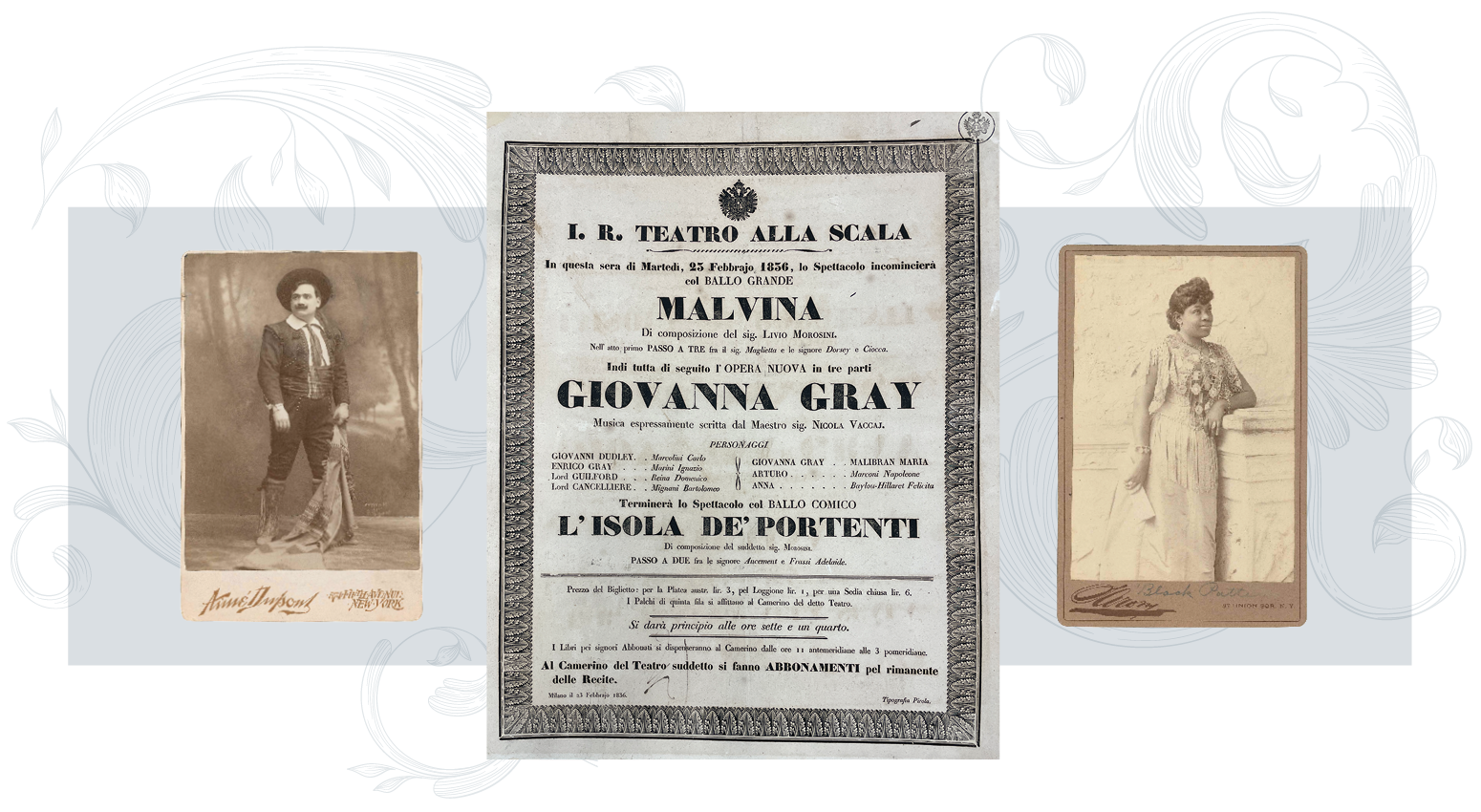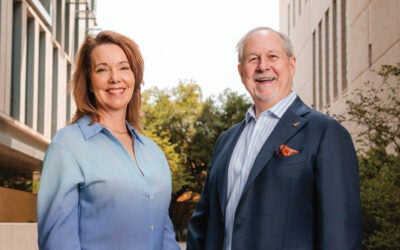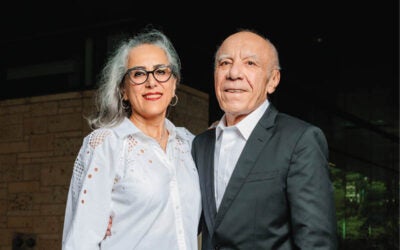All for Opera

A lifelong passion can be sparked in the most unexpected way. In his freshman year at The University of Texas at Austin, Girvice (pronounced grr-viss) Archer was at his parents’ Kerrville home for the weekend when he randomly turned the channel to the 1962 Miss America Pageant — a broadcast that changed his life.
“Miss Hawaii, Patricia Lei Anderson, sang ‘Un bel dì, vedremo’ from ‘Madame Butterfly’ and I was overwhelmed by the beauty of it,” Girvice recalls. Miss Hawaii finished 4th-runner-up in the pageant, but she had already won a new fan for opera. “When I got back to Austin, I went to the University Co-op and bought a Maria Callas LP of Puccini arias,” says Girvice. “That was my first opera record and I played it until I knew the music and text of each aria. Callas became my beacon.”
Ultimately Girvice’s collection of opera-related memorabilia went far beyond recordings. It eventually grew to more than 20,000 items, encompassing the history of photography from daguerreotype to modern images, including pre-photographic lithographs and engravings. Thanks to his generous gift to the Harry Ransom Center, the collection is now available for viewing and research by students and scholars, giving them access to a treasure trove of opera history.
Dr. Eric Colleary, the Ransom Center’s curator of performing arts, welcomes the inclusion of Girvice’s collection and sings the praises of this unique and remarkable gift.
“Dr. Archer carefully crafted his collection over several decades,” says Eric. “There are images represented in the collection that don’t exist anywhere else — celebrity singers and the now-forgotten alike. It will be an invaluable resource for the study of opera and performance for generations to come.”

Center: Poster for Milan’s Teatro alla Scala 1836 premiere of the opera “Giovanna Gray”
Right: Sissieretta Jones, one of the highest paid African American performers of her time. Photo by Napoleon Sarony, c. 1895.
Courtesy of the Ransom Center
A Musical Shift
Perhaps Girvice’s interest in opera would have developed eventually, even without his chance encounter with a beauty queen’s talent. He had some musical influence in his background — his father played piano by ear and used his talent to entertain guests at dinner parties. Girvice played trombone in school bands and recalls the emotional impact music had on him. “We played a smattering of operatic music,” he recalls. “A piece we played in our concert season one year — ‘Elsa’s Procession to the Cathedral’ from Wagner’s ‘Lohengrin’ — always made me teary.”
Medicine eclipsed music as a career option. After graduating from UT Southwestern Medical School, Girvice continued his training in Connecticut. In 1970, he met educator Frank Chiaramonte, who became his life partner and, in 2010, his husband. They have been longtime residents of Harwinton, where Frank has served three terms as first selectman and Girvice began his career in anesthesiology. Living just two hours away from New York City, he made frequent trips for operas and concerts. Over time, his interests evolved.
“Once past my youthful years,” he says, “it was difficult to keep up a work schedule in the operating room and still have the energy to see as many performances.”
Instead, Girvice became far more engrossed in the history of opera and the logistics of life on the road for performers in the 19th century. “The slow and dangerous means of travel to the U.S., South America and Australia with costumes in tow fascinated me,” he says. “English soprano Anna Bishop, while on tour, crossed the Andes on muleback. In 1854, German soprano Henriette Sontag died of cholera in Mexico City at age 48. There were some real legends back in those days.”
“It is a relief that my collection is in a safe place now and will stay together and be available to spark an interest in others.”
Finding a New Home
Several decades ago, Girvice started to worry about what would happen to the collection, to which he had devoted so much time and effort, after he was gone. After some consideration, he decided the Harry Ransom Center — UT’s internationally renowned humanities research center — would be the ideal location for his prized possessions. The center’s visitors number 60,000 annually; among them are scholars who seek access to important collections such as Albert Einstein’s unpublished notes for his work on general relativity, original works by Frida Kahlo and the earliest surviving photograph, produced in a camera obscura.
“It is a relief that my collection is in a safe place now and will stay together and be available to spark an interest in others,” says Girvice, whose contribution to the cultural life of UT will have a lasting impact.
“The history of the Ransom Center is, in part, the history of passionate collectors like Girvice Archer,” says Ransom Center Director Stephen Enniss. “My colleagues and I look forward to caring for this remarkable collection with some of the same passion he devoted to building it.”
Texas Leader Magazine
More from this series
An Ordinary Man’s Extraordinary Journey
Ray Brimble is creating a legacy inspired by community.
Getting to Know Jim Davis
President Jim Davis shares his thoughts on the bright future of UT and his gratitude for those who so generously support it.
The Power of Connections
As a successful entrepreneur, Shanaz Hemmati is using her gifts to create pathways for others.


